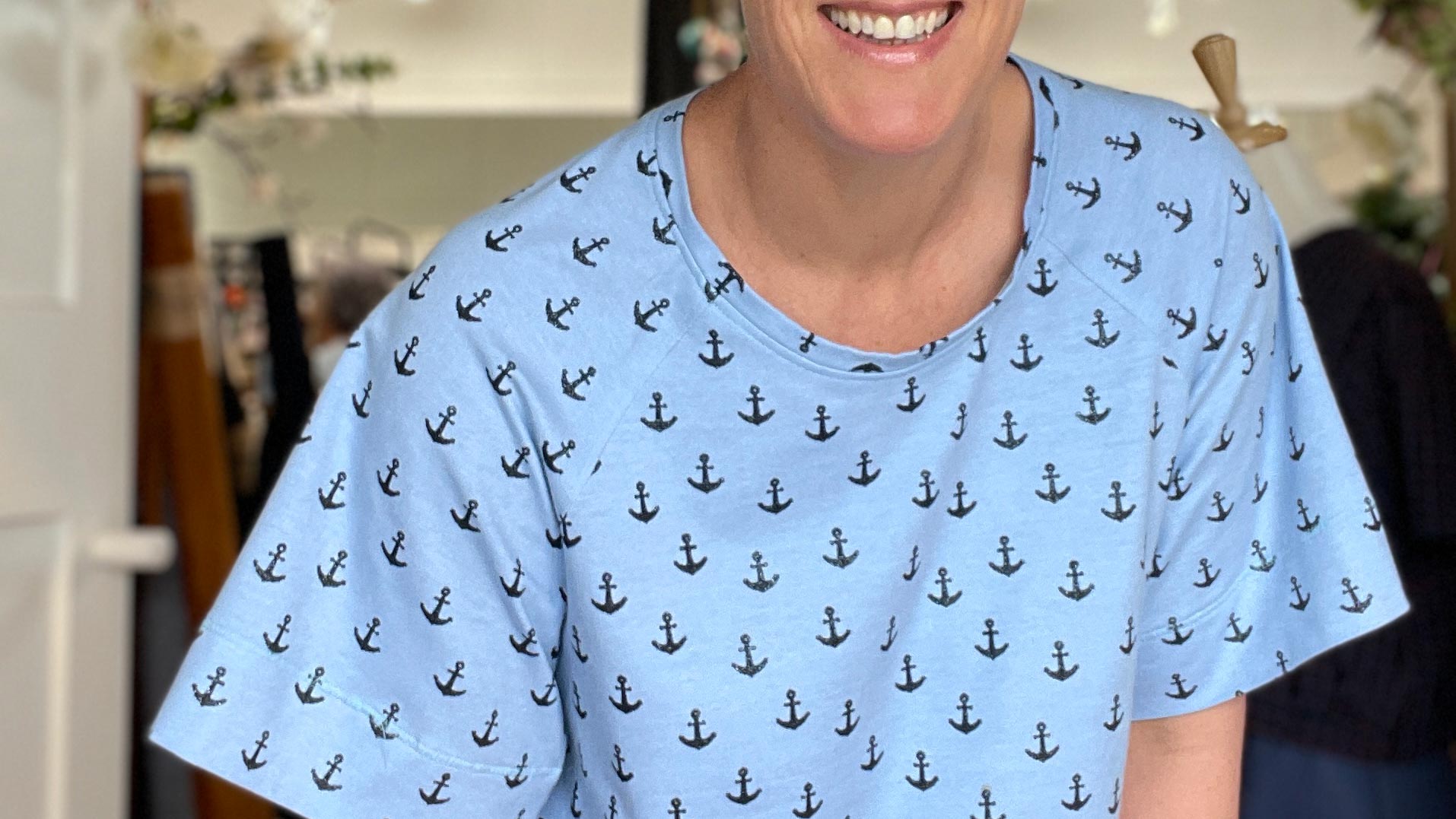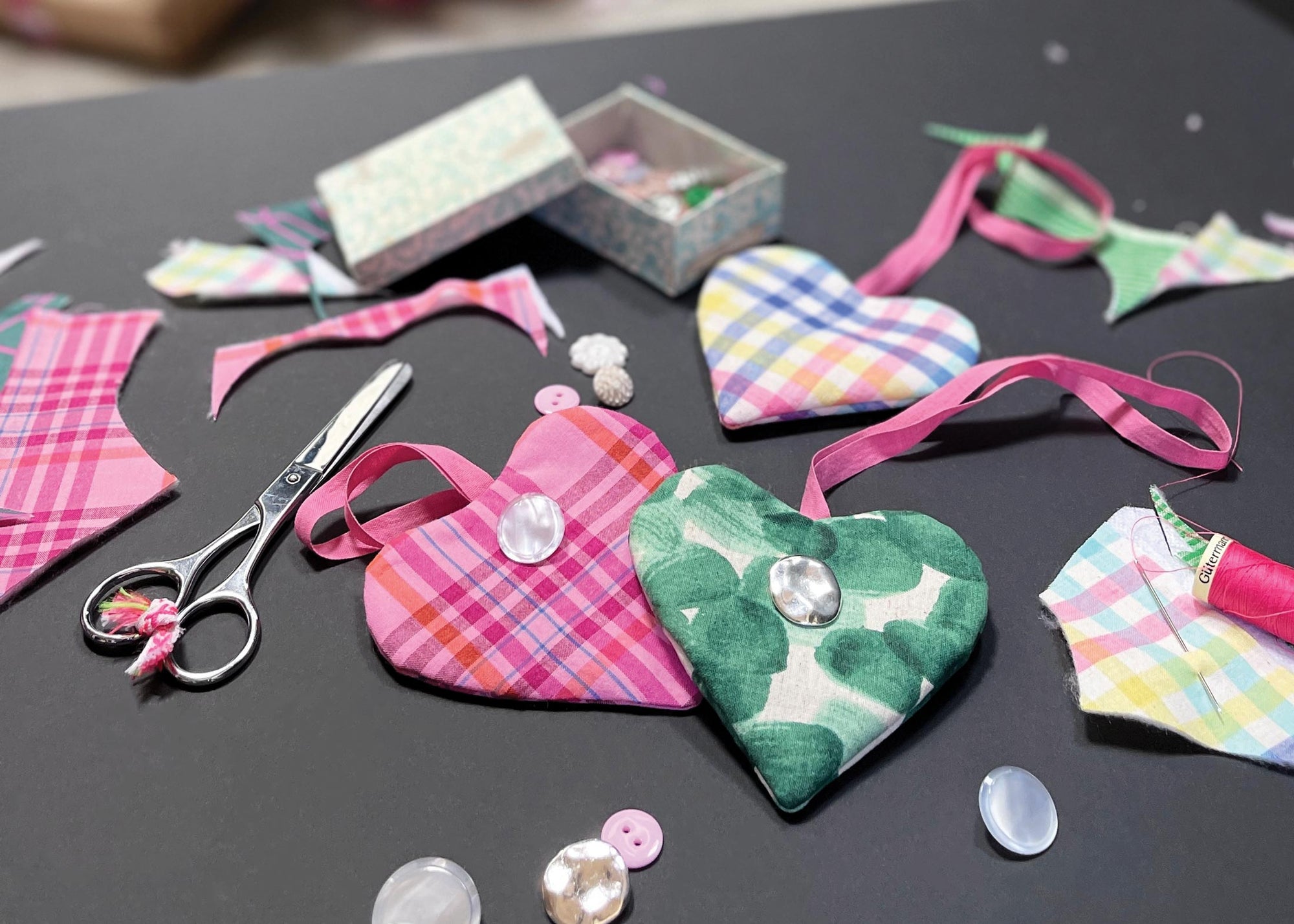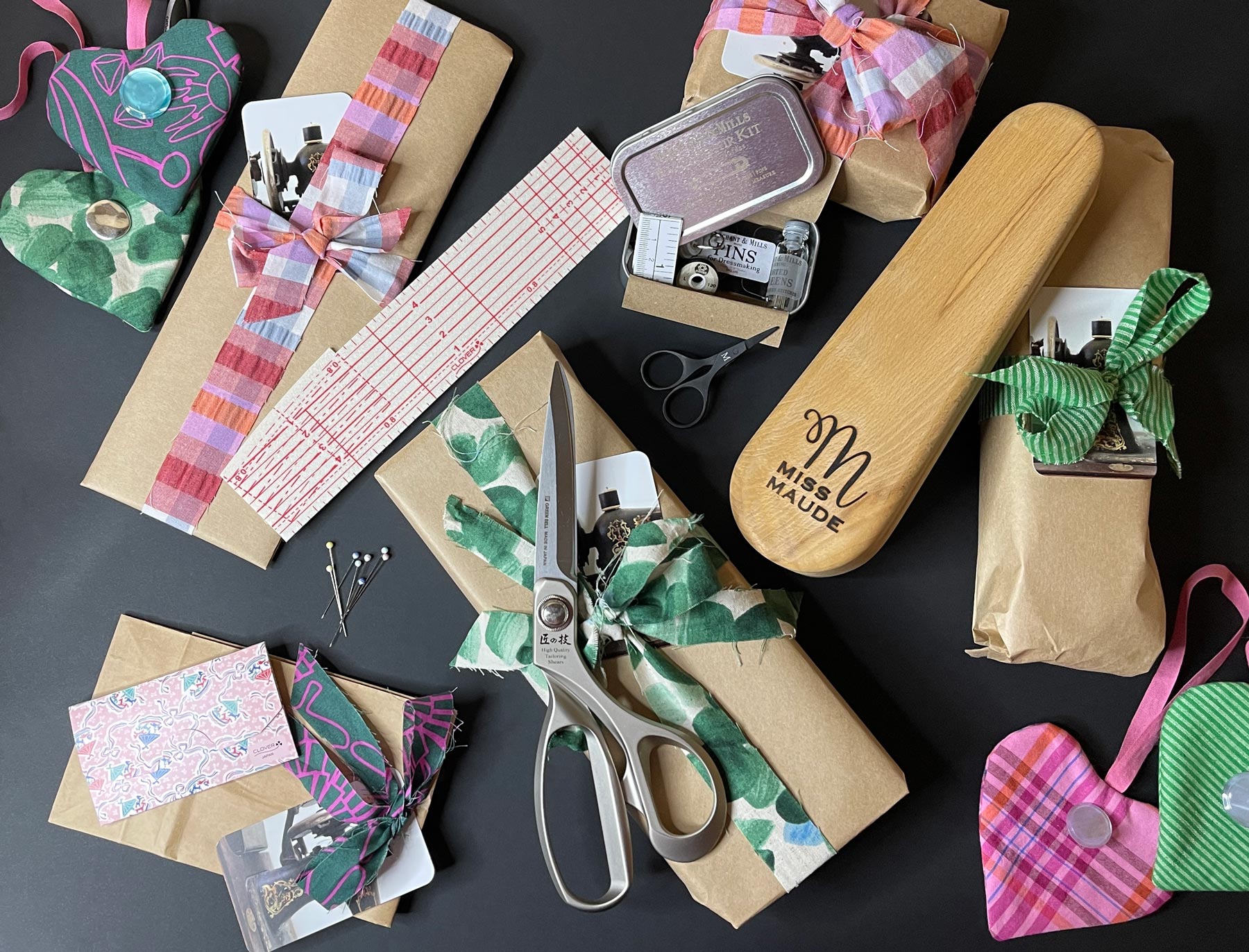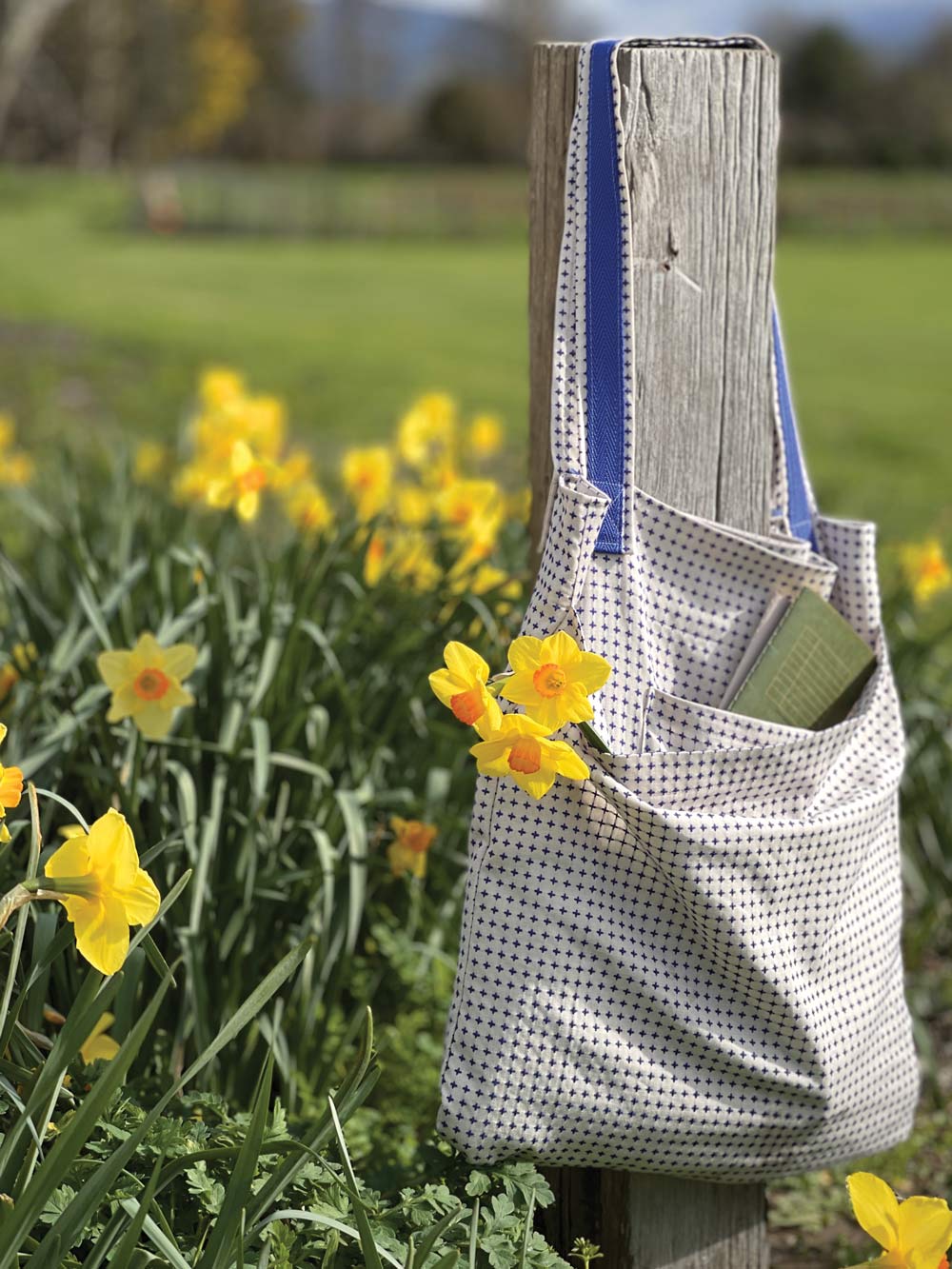We are so excited about today's (15 Nov 21) release of Issue 1 of Tauko Magazine - the latest publication to hit the sewing arena. And we're even more excited that one of the launch edition designers featured is Wellington local Johanna Morris (Jo). Jo has designed the versatile Kirsi Cardigan which we currently have displayed in the store. (When Jo isn't rubbing shoulders with other international designers on the world sewing stage, you'll find her heading up Forget Me Not Patterns)

Kirsi Cardigan from Tauko Magazine Issue 1
The Kirsi Cardigan Pattern is designed for knit fabric and is a fresh take on a wrap cardigan, featuring a beautiful flounce that flows around the cardigan - it is this that gives so much styling versatility. Wear it done up for a snug winter option, or have it loose to show off a waterfall of fabric at the front.
When we heard Jo was the designer, we sweet talked her into sewing one for us using our Organic Cotton Interlock Knit colour Dusk. We've had it on display in the store for the past couple of weeks and it has gained plenty of oohs and aahs. It's modern, yet timeless style combined with its versatility has really captured our attention.
While the pattern is designed for knits, as lovers of all things linen we started wondering if it might be just as wonderful in linen. Read on for a review of Jo's original designer version and our pattern hack in linen.
Sewn in interlock knit fabric and paired with casual knit trousers - you've got some seriously comfortable Sunday Brunch attire! Trousers: Tula Pants in Sideline Knit

The Details of the Knit Fabric Kirsi
Size
Made for Georgie in size 2. She has a 69cm Waist, 85cm Bust.
Fabric
Using Organic Cotton Interlock Knit colour Dusk which is a stable knit fabric, and has a lovely drape to it. It has been bound with our Double Fold Bias Binding colour Stardust Night which is a perfect match!

Skills Used (using Knit fabrics)
- Sewing knit fabrics.
- Inserting a sleeve.
- Matching notch marks.
- Attaching bias-binding.
No alterations were made and it was sewn according to the magazine's instructions. This is the long length version of the Kirsi with a matching belt.


We have been so delighted with Jo's make that we have made it in some of our linen for spring time! Because the pattern was designed for knits we did make some changes to make it work.
The Details of the Linen Kirsi
Size
Arna is wearing the store sample which is Size 5 and it was a little large for her. Her measurements are 81cm Waist and 92cm Bust. If she was making it for her measurements she would make a Size 3.
Using
- 1.2m of Terrace Crossweave Laundered Linen colour Flame for the body of the jacket.
- 1.4m of Boulevard Laundered Linen colour Miami Orange for the lining.
Aimed at a Confident Beginner if using a knit fabric or an Intermediate Sewer if using a woven fabric.
Skills Used (using woven)
- Making and attaching bias binding.
- Sewing on the bias.
- Flat felled seams.
- Edge stitching.

- We made the short version of the Kirsi with no belt.
- Removed the sleeves to give the garment more ease across the shoulders (suggested in the magazine for creating a different look).


- Added 1 cm to the side seams to give the armscye more room (suggested in the magazine to help give more ease).
- Used bias binding on the armscye to finish it.
- Finished the seams using a flat felled seam on the back seam and the side seams.
- Bias bound the seam attaching the flounce to the bodice. This was done when attaching the flounce to the bodice. Place right sides of the collar and the bodice together as per the pattern instructions and then place the bias binding on top of the wrong side of the collar and secure with pins or clips and sew.
 When the seams are sewn, iron and fold the bias binding towards the wrong side of the bodice and top stitch down. This encloses all the the raw seams and gives a lovely clean finish to the seam.
When the seams are sewn, iron and fold the bias binding towards the wrong side of the bodice and top stitch down. This encloses all the the raw seams and gives a lovely clean finish to the seam.


- Edge-stitched the Flounce to avoid the contrasting collar from rolling.

Conclusion
This is not a complicated make but it should be treated as a slow and careful project in either a knit or woven fabric. Part of the flounce is cut on the bias which can stretch out when handling or sewing it, this can be avoided by handling the fabric as little as possible and by carefully pinning or using fabric clips before sewing. We used our fabric clips on all seams to avoid stretching the fabric.

It is a project with a low number of steps and is very effective when finished. Another plus is the different pattern variations that you can create, and not to mention all the other lovely designs that are included in Tauko Magazine. One of the staff favourites is the Tamara Dress, which is a simple and easy A-line dress with statement pleats.












